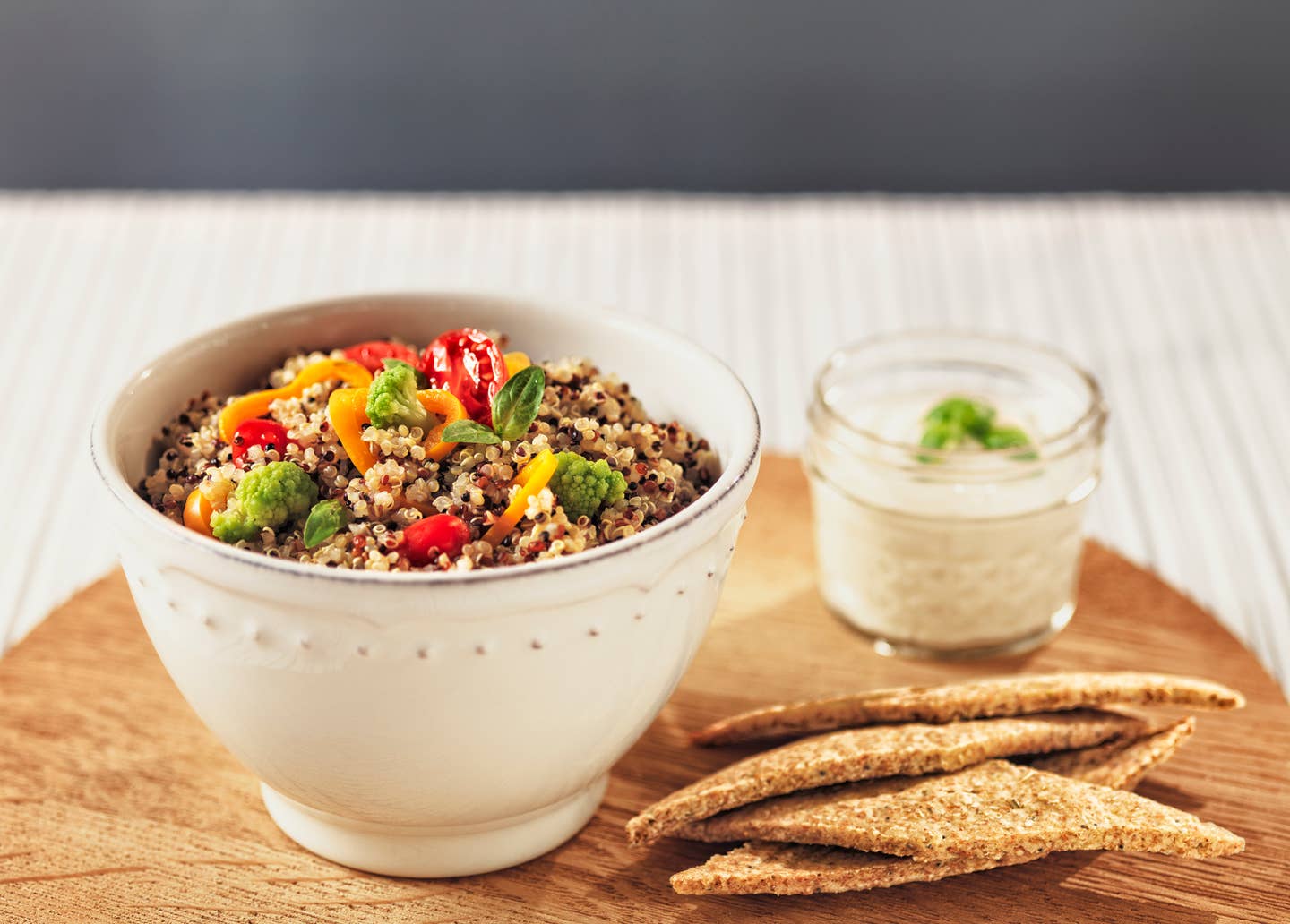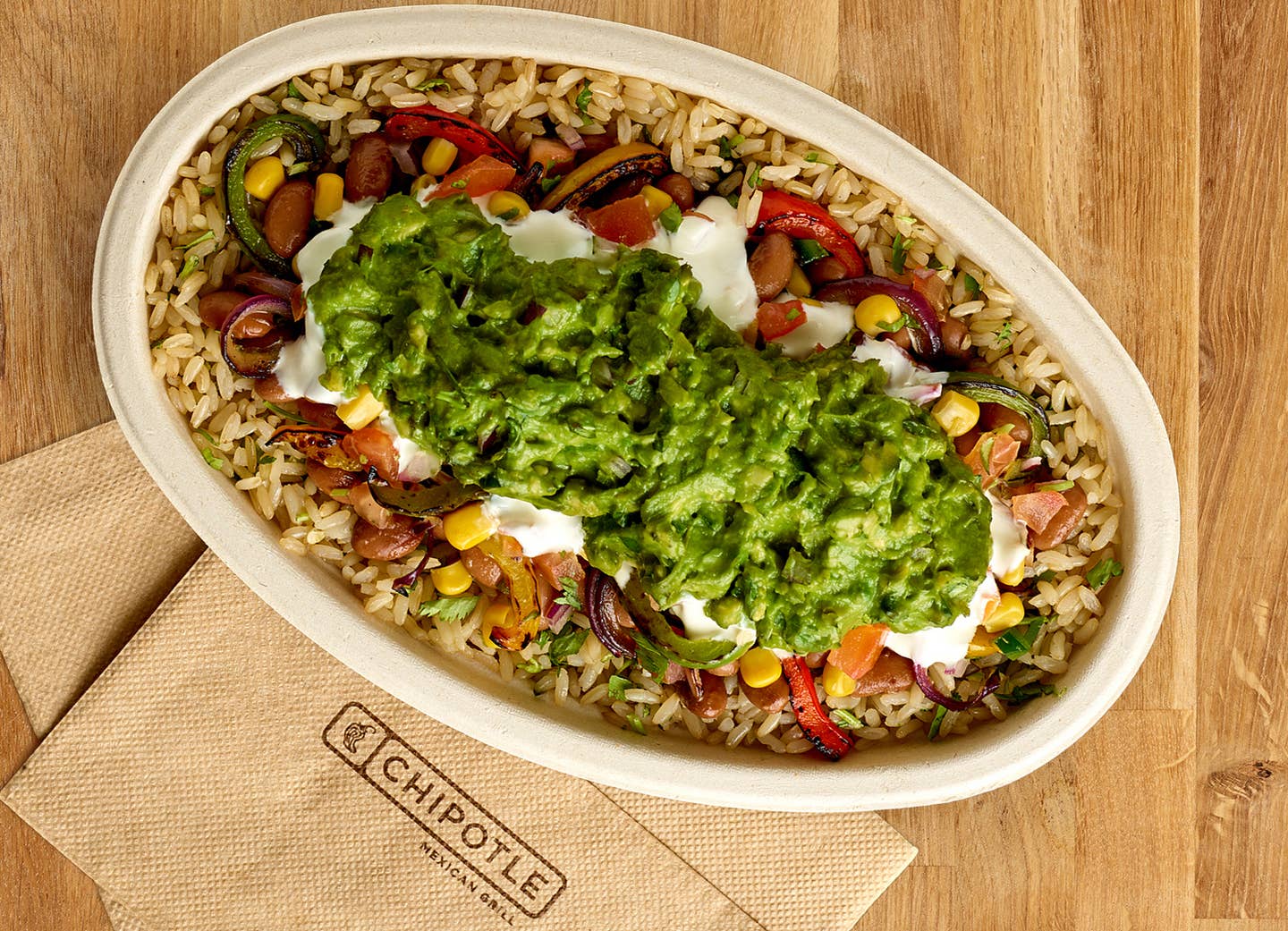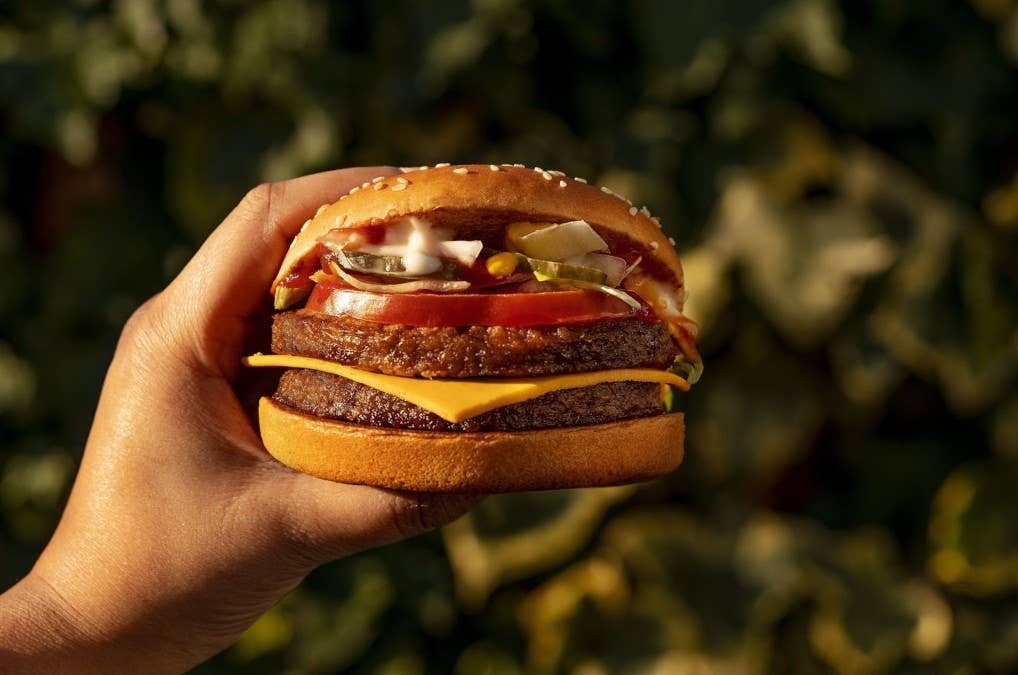
Eating This Food Can Help Prevent Type 2 Diabetes, Study Finds
Packed with protein, fiber, and antioxidants, quinoa is one of the healthiest grains, and now, new research suggests that consuming quinoa regularly can help prevent Type 2 diabetes. With approximately one in 10 (37.3 million) Americans diagnosed with diabetes, this groundbreaking review gives those facing the risk of Type 2 diabetes some relief by simply adding this common grain to their diets.
Quinoa has come to be known as a highly nutritious superfood, consisting of vitamins B, E, C, and all essential amino acids. Before now, no scientific studies backed claims that this grain could help reduce the risk of metabolic or cardiovascular diseases. Published in the medical journal Nutrients, researchers concluded that replacing high carbohydrate foods with quinoa can control blood sugar spikes.
Diana Diaz Rizzolo – a member of the Faculty of Health Sciences at the Universitat Oberta de Catalunya and a researcher at the August Pi I Sunyer Biomedical Research Institute – initiated the study when she realized that no study had been completed connecting quinoa consumption to preventing blood sugar spikes.
“We carried out a review to find out what the scientific literature had to say about all the benefits attributed to quinoa and we found that there was no previous scientific evidence, only hypotheses and that all the studies conducted in the past only focused on specific components or nutrients, without taking into account the food as a whole,” Rizzolo said in a statement.
“Seventy percent of people with prediabetes will go on to develop the disease,” Rizzolo said. “This conversion rate is even higher among older adults, which means that prediabetes plus aging equals a tremendous increase in the risk of developing the disease. This is why we wanted to see whether quinoa could be used to prevent the onset of the disease in this group.”
Eating Quinoa Reduces Risk of Diabetes
To conduct the study, the research team studied how diet and quinoa consumption affected prediabetic participants over the age of 65. The researchers examined the blood sugar levels of the participants over an entire month, providing participants with a glucose monitor that showed the change in blood sugar levels after each meal.
Towards the end of the month, the participants replaced high-carb foods including pasta, potatoes, and cereal with quinoa and quinoa-based foods provided by the Alicia Foundation. The quinoa-based foods included pasta, brioches, breadsticks, and bread.
“We compared the blood sugar patterns and found that when the participants had eaten quinoa, their blood sugar spike was lower than with their usual diet,” Rizzolo said. “This is crucial because these post-meal blood sugar spikes are a determining factor in the progression of Type 2 diabetes.”
The research also found that quinoa-based diets better control lipid levels. The researchers believe that this could signify that quinoa also controls high cholesterol and other risks for cardiac diseases. The grain also contains high levels of betaine – a compound that helps prevent coronary heart disease.
“Quinoa contains a high level of unsaturated fats, antioxidants, and polyphenols, with clear cardiovascular benefits,” Rizzolo said.
Eating Plant-Based Benefits Diabetics or Prediabetics
Type 2 diabetes cases are expected to surpass 700 million globally by 2045, but introducing more plant-based foods could slow down this spike. This April, another study found that eating healthy plant-based foods can significantly help lower the risk for Type 2 diabetes.
“While it is difficult to tease out the contributions of individual foods because they were analyzed together as a pattern, individual metabolites from consumption of polyphenol-rich plant foods like fruits, vegetables, coffee, and legumes are all closely linked to a healthy plant-based diet and lower risk of diabetes,” Lead Author of the Study and Professor Frank Hu said.
Cutting down on red meat can also help lower your risk of diabetes. One study found that regularly eating red or processed meats increases the risk of diabetes by 33 percent. Along with quinoa, eating more whole grains, lentils, beans, nuts, and soybeans help control blood sugar, improve weight management, and offer protective nutrients to stay healthy.
This month, a study found that a few minutes of exercise every day can help lower your blood sugar levels – reducing the risk of Type 2 diabetes. The study claims that resting after eating causes blood sugar spikes whereas taking just a two-minute walk helps with digestion and controlling blood sugar levels.
For more plant-based happenings, visit The Beet's News articles.
The 10 Highest Protein Grains to Add to Your Diet
1. Oats
Oats can be used in much more than oatmeal. Make protein oat muffins with oat flower. In Great Britain, Beer is actually made from oats. 1 cup equals Protein - 26.4g Calories - 607 Carbs - 103g Calcium - 84.3mg
2. Buckwheat
Although buckwheat is prepared like a grain, it is technically a seed. You might think buckwheat is off limits if you are gluten-free, but don’t let the name fool you. It is completely gluten-free!. Buckwheat noodles make a great base for an asian salad. 1 cup equals Protein - 22.5g Calories - 583 Carbs - 122g Calcium - 30.6mg
3. Cornmeal
Cornmeal is famously known to be the star ingredient in cornbread, but it can also be used in pancakes. Check out the Minimalist Baker recipe for Vegan Cornmeal Pancakes for your next breakfast. 1 cup (whole-grain, yellow) equals Protein - 9.9g Calories - 442 Carbs - 93.8g Calcium - 7.3mg
4. Sorghum
Sorghum can be popped just like corn. The process is simple and the product is healthy. To pop: Heat a pan and throw in the tiny sorghum grains. You don’t need to put any oil in the pan but olive oil or avocado oil are tasty choices. 1 cup equals Protein - 21.7g Calories - 651 Carbs - 143g Calcium - 53.8mg
5. Teff
Teff was originally a grass grown in northern Africa, but now you can buy it everywhere. One cup of cooked Teff has 123 mg of calcium, which is the same amount as a 1/2 a cup of cooked spinach. Teff is great in porridge and desserts. Sneak in some protein to your next Vegan Banana Bread recipe with teff flour. 1 cup equals Protein - 9.8g Calories - 255 Carbs - 50.0g
6. Amaranth
Amaranth is actually a seed but is categorized as a grain for it's starchy consistency. Use it instead of hot cereal or as a warm grain in your salad bowl. 1 cup equals Protein - 9.3g Calories - 251 Carbs - 46.0g Calcium - 116mg
7. Quinoa
Quinoa belongs to the same family as spinach and beets. The quinoa you grab at the grocery store is actually the seeds from the quinoa plant. Order it in your salad to add fiber, protein and filling grain to your plate. 1 cup equals Protein - 8.1g Calories - 222 Carbs - 39.4g Calcium - 31.5mg
8. Wild Rice
Wild rice is a food to always keep on hand since it doesn’t expire if properly stored in a cool, dry place. Once cooked, wild rice can be refrigerated for one week and frozen for six months. 1 cup equals Protein - 6.5g Calories - 166 Carbs - 35 g Calcium - 4.9 mg
9. Couscous
Couscous is technically pasta (who knew?) but is often associated with grains because of its small size. Couscous was traditionally shaped by hand and you can still buy the hand made ones, which are more interesting than the processed shaped ones. 1 cup equals Protein - 5.9g Calories - 176 Carbs - 36.5g Calcium - 12.6mg
10. Kamut
Kamut, or Oreintal wheat, is an ancient grain that first came from the area that is now Afghanistan. It has a rich nutty and buttery taste. If you're planning on serving kamut for dinner, make sure you plan ahead, since you need to soak this grain for at least 12 hours, or overnight, before cooking. 1 cup equals Protein - 11.1 g Calories - 251 Carbs - 52.4g
More From The Beet






